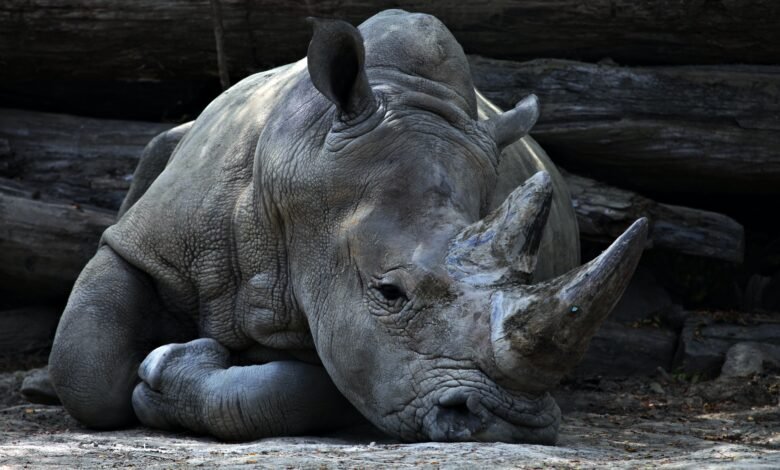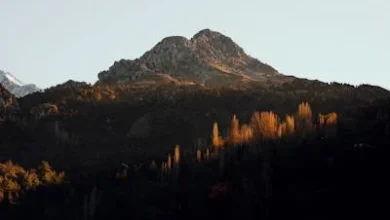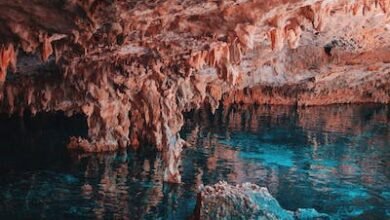Great One Horned Rhino Best Guide

Introduction to the Great One Horned Rhino
Welcome to the wild world of the Great One Horned Rhino! Majestic, powerful, and awe-inspiring, these magnificent creatures are a true symbol of strength and resilience. Found in select regions of Asia, this incredible species has captured the hearts of nature enthusiasts around the globe.
In this blog post, we will delve into every aspect of the Great One Horned Rhino – from their physical characteristics and natural habitat to the threats they face and ongoing conservation efforts. So buckle up as we embark on an exciting journey into the world of these remarkable creatures!
But first, let’s get acquainted with our subject matter. The Great One Horned Rhino, also known as Indian Rhinoceros or Greater One-Horned Rhinoceros (scientifically referred to as Rhinoceros unicornis), is one of five existing species of rhinos in the world. With its impressive size and unique horn protruding from its nose area, it truly stands out among other members of its kind.
Now that you have a glimpse into what awaits us ahead let’s dive deeper into discovering more about their physical attributes and where they call home. Join me on this thrilling adventure!
Physical Characteristics and Habitat of the Rhino
The Great One Horned Rhino, also known as the Indian Rhino or the Greater One-Horned Rhino, is a magnificent creature that roams the grasslands and forests of India and Nepal. This species is one of the largest rhinos in the world, weighing up to 3,000 pounds and measuring about 6 feet tall at the shoulder.
One of its most distinctive features is its single horn on its snout, which can reach lengths of up to 24 inches! The rhino’s skin is thick and grayish-brown in color, providing protection against predators. They have poor eyesight but make up for it with their excellent sense of hearing and smell.
These powerful creatures are well adapted to their habitat, which consists of tall grasslands, swamps, and dense forests. They are herbivores with a diet primarily consisting of grasses, leaves, fruits, and aquatic plants. Rhinos spend much of their time grazing on vegetation or wallowing in mud to cool off from hot temperatures.
Unfortunately, due to human activities such as poaching for their horns and habitat loss caused by deforestation and agricultural development,
the population has sharply declined over the years. These threats have pushed these iconic animals towards endangerment status.
Efforts are being made to conserve this magnificent species through various initiatives including anti-poaching measures
and protected reserves where they can thrive undisturbed by human activities.
In India’s Kaziranga National Park,
which is home to two-thirds of the world’s population
of Great One Horned Rhinos,
visitors have a chance
to see these majestic creatures up close
on guided safari tours.
Another popular destination for spotting rhinos is Chitwan National Park in Nepal,
where conservation efforts have successfully increased their numbers.
Here are some interesting facts about these amazing animals:
– The Great One Horned Rhino has unique folds on its skin that give it an armored appearance.
– They are excellent swimmers and can cross rivers easily using their strong
Threats to the Rhino Population
The Great One Horned Rhino, also known as the Indian Rhinoceros, is facing numerous threats that are putting its population at risk. Habitat loss is one of the major challenges these majestic creatures face. With increasing human activities such as agriculture and urbanization, their natural habitat is being encroached upon, leaving them with limited space to roam freely.
Poaching for their horns is another significant threat to rhino populations. Despite international bans on the trade of rhino horn, there continues to be a high demand in some countries for their supposed medicinal properties. This illegal market drives poachers to hunt down these magnificent animals and sell their horns at exorbitant prices.
Furthermore, human-wildlife conflict poses a serious challenge for rhinos. As human settlements expand into previously untouched areas, clashes between humans and rhinos become more frequent. Farmers often view these animals as pests that destroy crops and attack livestock, leading to retaliatory killings.
Climate change also plays a role in threatening rhino populations. Rising temperatures can alter vegetation patterns and affect food availability for these herbivores. Extreme weather events like droughts or floods can further disrupt their habitats and impact their overall survival.
Efforts are underway by various organizations and governments to address these threats and protect the Great One Horned Rhino population. Strict anti-poaching measures have been implemented along with initiatives focused on conservation education and awareness among local communities.
By supporting responsible eco-tourism practices that benefit local communities while promoting wildlife conservation efforts, we can contribute towards safeguarding this incredible species.
Together, we must strive towards creating sustainable solutions that ensure the long-term survival of the Great One Horned Rhino in its natural habitat without compromising our own needs as well.
Conservation Efforts for the Great One Horned Rhino
The conservation efforts for the Great One Horned Rhino have been crucial in ensuring their survival and protection. Various organizations, governments, and local communities have come together to implement strategies that focus on safeguarding these majestic creatures.
One key initiative has been the establishment of protected areas and national parks dedicated to rhino preservation. These sanctuaries provide a safe habitat where rhinos can roam freely without fear of poaching or habitat loss. Through strict monitoring and anti-poaching measures, rangers work tirelessly to protect these gentle giants from harm.
Additionally, community-based conservation programs have played a significant role in raising awareness about the importance of rhino conservation among local communities. By involving them in initiatives such as eco-tourism and sustainable livelihood projects, it creates a sense of ownership and pride in protecting their natural heritage.
Collaboration between different stakeholders is also vital for successful conservation efforts. Governments, non-profit organizations, researchers, and local communities join forces to conduct research on rhino behavior patterns, genetics, health issues, and population dynamics. This information helps inform better management practices and policy decisions.
Another critical aspect of conservation is public education campaigns aimed at raising awareness about the plight of the Great One Horned Rhino. By highlighting their importance within ecosystems as well as their cultural significance, these campaigns help generate support for protection efforts at both local and global levels.
Innovative approaches such as translocation programs have also proved effective in expanding rhino populations by reintroducing them into suitable habitats where they were previously extinct or endangered. This strategy not only enhances genetic diversity but also ensures long-term sustainability for future generations.
Overall,
these combined efforts are making a positive impact on preserving the Great One Horned Rhino species.
However,
continued vigilance is necessary to combat ongoing threats such as poaching,
habitat loss due to human encroachment,
and climate change.
By supporting responsible tourism, contributing to conservation organizations,
and spreading awareness about the importance of rhino
Top Places to See Rhinos in the Wild
If you’re an adventure seeker and a wildlife enthusiast, witnessing the majestic Great One Horned Rhino in its natural habitat is an experience like no other. These incredible creatures can be found in several locations across Asia, offering thrilling opportunities for wildlife enthusiasts to observe them up close.
One of the top places to see rhinos is Kaziranga National Park in India. This UNESCO World Heritage Site boasts the highest population of Great One Horned Rhinos, making it a prime destination for spotting these magnificent creatures. Embark on a jeep safari or take a boat ride along the Brahmaputra River for guaranteed sightings.
Another remarkable location is Chitwan National Park in Nepal. Home to over 600 rhinos, this park offers diverse habitats including grasslands and dense forests where you can spot rhinos grazing peacefully. Explore the park on elephant-back safaris or venture out on foot accompanied by experienced guides.
For those looking to travel further east, Bardiya National Park in Nepal is another excellent choice. With fewer tourists compared to other parks, Bardiya provides a more intimate and authentic encounter with rhinos as well as other wildlife such as tigers and elephants.
In Assam, India’s Manas National Park also offers fantastic opportunities for spotting rhinoceroses amidst lush green landscapes and serene river valleys. The park’s unique blend of grasslands and woodlands creates an ideal environment for not only rhinos but also various bird species.
Don’t forget about Royal Chitwan National Park in Bhutan! This lesser-known gem allows visitors to witness great one-horned rhinoceroses against breathtaking backdrops of towering mountains and pristine rivers.
No matter which location you choose, seeing these incredible animals roam freely will leave you with memories that last a lifetime. So pack your binoculars, camera gear, and adventurous spirit – get ready to embark on an unforgettable rhino safari!
Interesting Facts about the Great One Horned Rhino
The Great One Horned Rhino, also known as the Indian Rhinoceros or the Greater One-Horned Rhinoceros, is a fascinating creature that has captured the imagination of people around the world. Here are some intriguing facts about this majestic animal.
1. Unique Physical Features: The most striking feature of the Great One Horned Rhino is its single horn, which can grow up to 24 inches long. Unlike other rhino species, their skin folds into thick armor-like plates that provide protection against predators.
2. Massive Size: These rhinos are one of the largest land mammals in Asia and can weigh up to 5,000 pounds! Despite their immense size, they are surprisingly agile and can run at speeds of up to 35 miles per hour when threatened.
3. Herbivorous Diet: The diet of these magnificent creatures consists mainly of grasses, leaves, fruits, and aquatic plants. They have strong molar teeth that help them grind tough vegetation for digestion.
4. Social Behavior: While solitary by nature, male rhinos may establish territories and engage in fierce battles with rivals during mating season. Female rhinos usually live with their offspring in small family groups called crashes.
5. Excellent Swimmers: Great One Horned Rhinos are excellent swimmers and often submerge themselves partially or completely in water bodies to cool off from heat or escape from predators like tigers or crocodiles.
6. Successful Conservation Efforts: Thanks to dedicated conservation efforts over several decades, populations of these amazing creatures have been increasing steadily across protected areas in India and Nepal.
7. Symbolic Status: The Great One Horned Rhino holds great cultural significance in many Asian countries such as India and Nepal where it is revered as a symbol of power and strength.
8.Resilient Survivors:The resilience displayed by these magnificent animals is truly remarkable considering they have survived habitat loss, poaching, and historical hunting practices.
The Great
How You Can Help Protect these Majestic Creatures
1. Support Conservation Organizations: One of the most effective ways to help protect the Great One Horned Rhino is by supporting conservation organizations that are dedicated to their preservation. These organizations work tirelessly to monitor and protect rhino populations, rehabilitate injured or orphaned rhinos, and implement anti-poaching measures.
2. Spread Awareness: Use your voice and platform to spread awareness about the plight of the Great One Horned Rhino. Share informative articles or posts on social media, participate in local events or fundraisers, and educate others about the importance of preserving these magnificent creatures.
3. Responsible Tourism: When visiting areas where rhinos inhabit, choose responsible tour operators who prioritize animal welfare and conservation efforts. Avoid activities such as riding elephants or taking part in any form of wildlife exploitation.
4. Report Wildlife Crime: If you come across any information related to poaching or illegal wildlife trade involving rhinos, report it immediately to relevant authorities or organizations such as wildlife crime hotlines.
5. Reduce Demand for Rhino Products: Take a stand against purchasing products made from rhino horns or other body parts. By reducing demand for these items, we can discourage illegal poaching activities.
6.Support Local Communities: Many communities coexist with rhinos in their natural habitats; supporting sustainable livelihoods for them can reduce their dependency on activities harmful to wildlife like poaching.
7.Get Involved Locally: Join local volunteer programs focused on environmental education and conservation initiatives centered around protecting endangered species like the Great One Horned Rhino.
By actively participating in efforts aimed at protecting this majestic creature, you can contribute towards its long-term survival and ensure that future generations get to witness its beauty too!
Conclusion
In this guide, we have delved into the fascinating world of the Great One Horned Rhino. From their physical characteristics and habitat to the threats they face and the conservation efforts being made to protect them, we have explored various aspects of these majestic creatures.
The Great One Horned Rhino is truly a remarkable species with its unique features and important role in maintaining ecological balance. However, it is also one of the most endangered animals on our planet. The relentless poaching for its horn and loss of habitat pose significant challenges to its survival.
Thankfully, dedicated conservation organizations and governments are working tirelessly to ensure the protection of these rhinos. Through initiatives such as anti-poaching measures, habitat restoration, and community engagement programs, progress is being made in safeguarding their future.
If you ever get a chance to witness these magnificent creatures in their natural habitat, consider yourself fortunate. Top places like Kaziranga National Park in India or Chitwan National Park in Nepal offer excellent opportunities for rhino sightings.
As we conclude this guide on the Great One Horned Rhino, let’s remember that every individual can contribute towards protecting these animals. By supporting conservation efforts through donations or volunteering at wildlife sanctuaries, each one of us can make a difference.
Let us stand united in our commitment to preserving not just the Great One Horned Rhino but all endangered species around the world. Together, we can create a safer environment where these incredible creatures thrive for generations to come.



